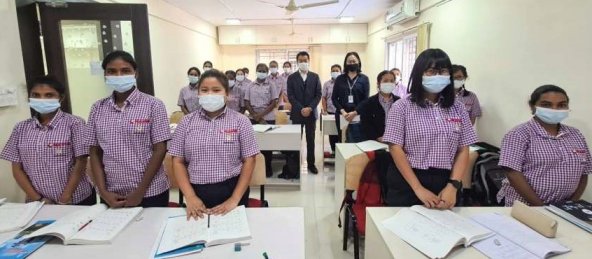Japan to reduce dependency on ASEAN for skilled workers, looking towards India
Japan sees huge potential in India for sourcing skilled manpower because of factors like very high language literacy, and structured TITP/SSW mechanism.
NEW DELHI: Hitherto neglected, India may soon turn out to be a preferred source of skilled workers for Japan over and above Vietnam, Philippines, Indonesia, Myanmar, Cambodia, and others because of a score of positive developments, and the of Indian youths visiting Japan for employment may rise.
Besides Japan opening its borders for the foreigners including businesspeople and those headed for the technical intern training program (TITP) or specified skilled workers (SSW) from March 1 allowing 5,000 foreigners a day into its country, up from the existing 3,500 a day, the image of Indian workers amongst Japanese employers has started to get better.
In India, the TITP and SSW are the systems spearheaded by the National Skill Development Corporation (NSDC) under which Japan receives foreign nationals as workers.
The Japanese companies are starting to understand that Indian youths are not only proficient in multiple languages as compared to other countries, but their Japanese language learning and pronunciation ability is also found to be better than those coming from countries like Vietnam, China, the Philippines, Indonesia, and others.
At present, India remains the least preferred TITP/SSW destination for Japanese employers. Till 2019, Japan accepted close to 400,000 foreign technical intern trainees of which more than 50% were from Vietnam, and others from countries like the Philippines, China, Indonesia, Myanmar, Cambodia, etc. India, which started TITP though late in 2018, has been able to send merely 223 trainees to Japan so far. Even neighboring country Nepal has sent more skilled workers than India.
“I have interacted with many receiving organizations (ROs), the potential employers in Japan. They have indicated that India was set to emerge as a preferred destination for skilled workers for Japan. Japan’s conventional dependency on nations like Vietnam, China, and others was about to reduce for two reasons,” said Tsuneya KATAGIRI, Country Manager – India, All Nippon Airways Co. Ltd.

Mr. KATAGIRI has been studying and working on the TITP and SSW model for quite a long time to understand what made it fail in India vis-à-vis other countries. He not only met the ROs in Japan but also about 20 India-based sending organizations (SOs) engaged in sending skilled workers abroad.
“One reason is that Indian youths own the ability to speak multiple languages and also have an excellent foreign language grasping power, they also have better Japanese language pronunciation skills when compared with other countries. And the second reason is that the demand for skilled workers in countries like Vietnam and China, rising for their own requirements because of expanding economic activities. Therefore, the workers in these countries are now trying to avoid going abroad,” said Mr. KATAGIRI.
Intensive comparative study of the TITP/SSW frameworks in India, Japan, and other countries by Mr. KATAGIRI also found that India would be a preferred source of skilled workers also because, unlike Vietnam, India did not have brokers sending workers to Japan but the authorized SOs, which are 33 in number in India.
However, Myanmar was recently emerging as a preferred source of skilled people for Japanese employers but because of the change of regime in that country and political instability following military coupe, this country is no more an attractive proposition.
Related article: Japan must change its mindset, welcome TITP trainees from India
“I have carried out the thorough study by meeting 20 SOs, Supervising organizations, local governments, JA, foreign trainee employers, owners of Small and Medium-sized Enterprises (SMEs), Japanese accommodation and hotels, farmers, etc, to figure out why there is only a handful of TITP/SSW from India,” said ANA’s country manager.
He found that Japanese employers and supervising organizations misunderstood India as only good for brilliant IT skilled workers, not well enough for TITP/SSW.
“In many meetings with Japanese organizations, I informed them that Indian youths especially from the North-eastern part of India not only carried similar looks like Japanese, they also shared eating habits similar to Japanese besides being hardworking and sincere people. So, basis many factors,
India has high potential in this sector. Also, both Japan and India are committed to increasing the number as PM Kishida and PM Narendra Modi in October last year had agreed to increase the number of TITP / SSW from India,” said Mr. KATAGIRI.



